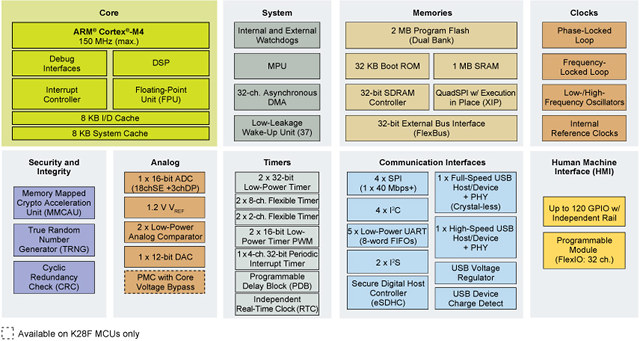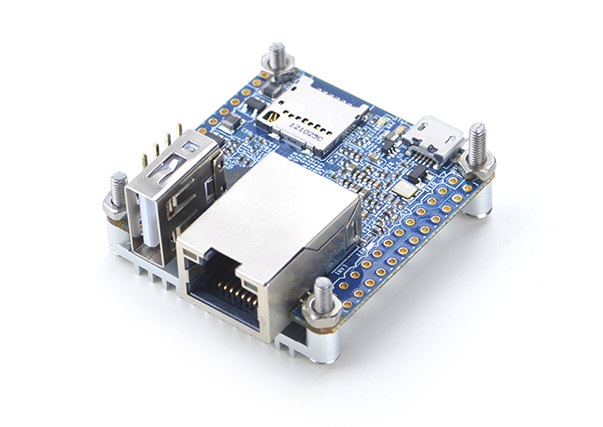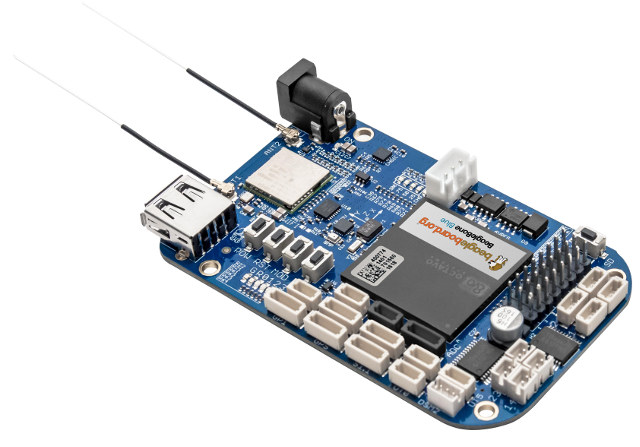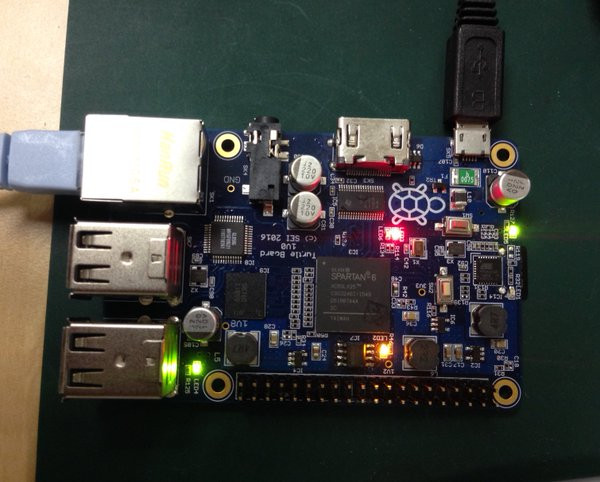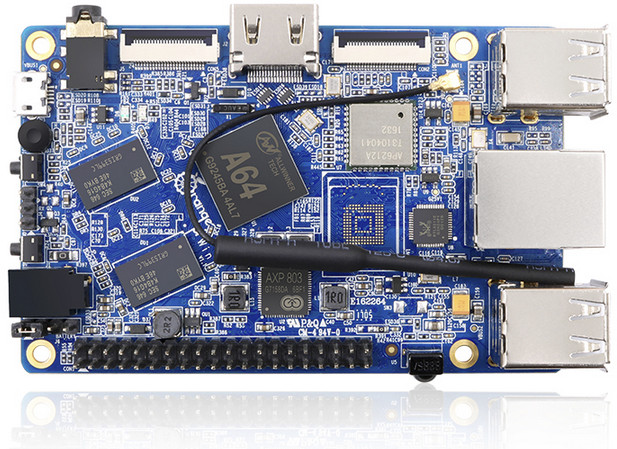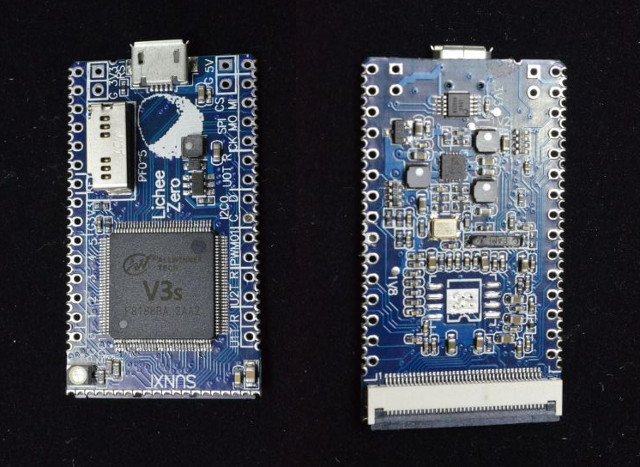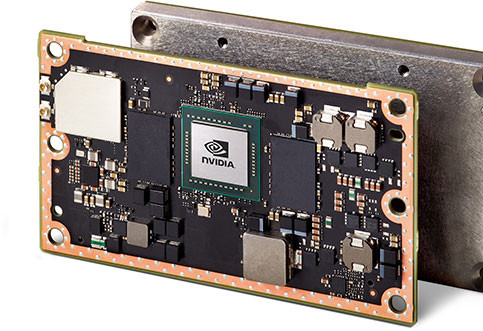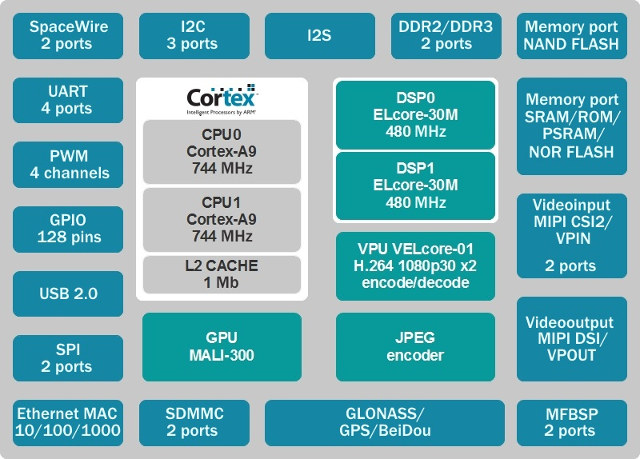NXP pushed out several press releases with the start of Embedded World 2017 in Germany, including three new micro-controllers/processors addressing different market segments: Kinetis K27/K28 MCU Cortex M4 MCU family, QorIQ Layerscape LS1028A industrial applications processor, and i.MX 8X SoC family for display and audio applications, 3D graphic display clusters, telematics and V2X (Vehicle to everything). NXP Kinetis K27/K28 MCU NXP Kinetis K27/K28 MCU family is based on an ARM Cortex-M4 core clocked at up to 150 MHz with FPU,and includes up to 1MB embedded SRAM, 2MB flash, and especially target portable display applications. Kinetis K27/K28 MCUs share the following main features: 2x I2S interfaces, 2x USB Controllers (High-Speed with integrated High-Speed PHY and Full-Speed) and mainstream analog peripherals 32-bit SDRAM memory controller and QuadSPI interface supporting eXecution-In-Place (XiP) True Random Number Generator, Cyclic Redundancy Check, Memory Mapped Cryptographic Acceleration Unit K28 supports 3 input supply voltage rails (1.2V, 1.8V […]
NanoPi NEO2 Development Board Powered by Allwinner H5 64-bit ARM Processor Sells for $15
NanoPi NEO is a cool little board, and I’ve been using it with Armbian as a 24/7 MQTT + Domoticz server for several weeks without any issues so far. FriendlyElec has now an update with NanoPi NEO2 featuring Allwinner H5 quad core Cortex A53 processor instead of Allwinner H3 Cortex A7 processor, a faster Gigabit Ethernet connection, and a new audio header. NanoPi NEO2 specifications: SoC – Allwinner H5 quad core Cortex A53 processor with an ARM Mali-450MP GPU System Memory – 512 MB DDR3 Storage – micro SD card slot Connectivity – Gigabit Ethernet (via RTL8211E-VB-CG chip) USB – 1x USB 2.0 host ports, 1x micro USB OTG port, 2x USB via headers Expansion headers 24-pin header with I2C, 2x UART, SPI, PWM, and power signals 12-pin header with 2x USB, IR pin, I2S 5-pin audio header with microphone and LINE out signals Debugging – 4-pin header for serial […]
$80 BeagleBone Blue Board Targets Robots & Drones, Robotics Education
Last year, we reported that BeagleBoard.org was working with the University of California San Diego on BeagleBone Blue board for robotics educational kits such as EduMiP self-balancing robot, and EduRover four wheel robot. The board has finally launched, so we know the full details, and it can be purchased for about $80 on Mouser, Element14 or Arrow websites. BeagleBone Blue specifications: SiP (System-in-Package) – Octavo Systems OSD3358 with TI Sitara AM3358 ARM Cortex-A8 processor @ up to 1 GHz, 2×32-bit 200-MHz programmable real-time units (PRUs), PowerVR SGX530 GPU, PMIC, and 512MB DDR3 Storage – 4GB eMMC flash, micro SD slot Connectivity – WiFi 802.11 b/g/n, Bluetooth 4.1 LE (TI Wilink 8) with two antennas USB – 1x USB 2.0 client and host port Sensors – 9 axis IMU, barometer Expansion Motor control – 8x 6V servo out, 4x DC motor out, 4x quadrature encoder in Other interfaces – GPIOs, 5x UARTs, 2x […]
Turtle Board is a Raspberry Pi 2 Like FPGA Board for J-Core J2 Open Source SuperH SH2 SoC
J-core J2 is an open source processor and SoC design implemented in VHDL, and using SH2 instruction set found in some Renesas (previously Hitachi) micro-controllers. The code available royalty free under a BSD license, and it’s also patent-free since all SH2 related patents expired expired in October 2014. The developers used to run the code on Xilinx Spartan 6 based Numato Mimas v2 board since it was cheap ($50) and mostly did the job. “Mostly”, because it still lacked Ethernet, capability for SMP and the serial port was slow, so they decided to design their own Turtle Board to address those issues. Turtle Board preliminary specifications: FPGA – Xilinx Spartan 6 LS25 or LS45 FPGA MCU – 8-bit Atmel MCU for load/update flash at power on. Storage – micro SD slot, 8MB SPI flash System memory – 256 MB RAM Video & Audio Output – HDMI and AV jack Connectivity […]
$25 Orange Pi Win Development Board To Run Windows 10 IoT (and Linux, and Android)
Shenzhen Xunlong Software must already have over a dozen of Orange Pi boards, but this is not stopping them from launching more, and the company has just introduced Orange Pi Win, powered by Allwinner A64 processor, and beside supporting Linux and Android like other models, it’s rumored to run Windows 10 IoT too.Orange Pi Win specifications: SoC – Allwinner A64 quad core ARM Cortex A53 processor @ 1.2 GHz with Mali-400MP2 GPU System Memory – 1 GB DDR3 Storage – 2MB SPI flash, micro SD slot up to 64 GB, footprint for optional eMMC flash Video Output / Display interface – HDMI 1.4 up to 4K @ 30 Hz with CEC 3D and HDCP support,, MIPI LCD interface Audio – HDMI, 3.5 mm headphone jack, built-in microphone Connectivity – Gigabit Ethernet + 802.11 b/g/n WiFi & Bluetooth 4.2 (AP6212) USB – 4x USB 2.0 host ports, 1x micro USB OTG […]
$6 LicheePi Zero ARM Board Runs Linux 4.10, Supports Lots of Add-On Boards (Crowdfunding)
We’ve already covered LicheePi One board powered by Allwinner A13 processor, but it was not for sale out of China, and the developers are now back with LicheePi Zero board/module, slightly bigger than an SD card, featuring Allwinner V3s processor, and offered for as low as $6, or $8 with WiFi via an Indiegogo campaign. LicheePi Zero specifications: SoC – Allwinner V3s ARM Cortex A7 processor @ up to 1.2 GHz with an ARM Mali-400 GPU, 512Mbit (64MB) DDR2 on-chip Storage – micro SD card slot, SPI flash (not 100% clear if it will be populated when shipped to backers) Display – FPC40 RGB Connector with support for 800×480 RGB LCD Audio – Audio codec USB – micro USB OTG port Expansion 2x 15 headers with 2.54mm pitch, breadboard friendly with GPIOs, 2x UART, 1x SPI, 2x I2C,ADC, 1x PWM 2x 30 half-holes with 1.27mm pitch with OTG USB,MIPI CSI,EPHY,RGB […]
NVIDIA Introduces Jetson TX2 Embedded Artificial Intelligence Computer
NVIDIA has just announced an upgrade to to their Jetson TX1 module, with Jetson TX2 “Embedded AI Computer” with Tegra X2 Parker SoC that either doubles the performance of its predecessor, or runs at more than twice the power efficiency, while drawing less than 7.5 watts of power. The company provided a comparison showing the differences between TX1 and TX2 modules. Jetson TX2 Jetson TX1 GPU NVIDIA Pascal, 256 CUDA cores NVIDIA Maxwell, 256 CUDA cores CPU HMP Dual Denver 2/2 MB L2 + Quad ARM® A57/2 MB L2 Quad ARM® A57/2 MB L2 Video 4K x 2K 60 Hz Encode (HEVC) 4K x 2K 60 Hz Decode (12-Bit Support) 4K x 2K 30 Hz Encode (HEVC) 4K x 2K 60 Hz Decode (10-Bit Support) Memory 8 GB 128 bit LPDDR4 58.3 GB/s 4 GB 64 bit LPDDR4 25.6 GB/s Display 2x DSI, 2x DP 1.2 / HDMI 2.0 / […]
Salute EL24D1: Evaluation Board with Russian Processor ELVEES 1892VM14Ya for Harsh Environments
This is a guest post by Promwad, an electronics design house with development centers in Belarus and Russia, as well as sales offices in Europe and North America. They also evaluated Baikal T1 development board previously. Engineers at Promwad Electronics Design House have got a new Russian board to experiment; it is an evaluation board Salute EL24D1 which is based upon multicore 1892VM14Ya SOC designed to be used in the Arctic and in space. Let us have a look what it is able to do. Board Salute EL24D1 is designed to investigate CPU abilities, develop and debug software. The developer, R&D center ELVEES began deliveries of Salute at the end of 2015. One of the main application areas of 1892VM14Ya is machine vision systems, processing of video and audio streaming in severe conditions, in manufacturing and in space. So the CPU is mainly aimed at the industrial sector rather than […]


